Living 600% Longer Then Expected With Dog Hemangiosarcoma
* This post contains affiliate links, and we will be compensated if you buy after clicking on our links.

I’ll never forgot the day when I discovered my Jack had a tumor growing on his spleen. The day was November 6th, 2019. That evening I gave Jack a bone. He ate it as he normally would, but a few hours later something was not right. His breathing was a little strange.
So I was going to take Jack to animal hospital but I monitored the situation and everything seemed fine after an hour or so. The next day I took Jack to the vet, where we took an X-ray of his stomach when we found there was a tumor on his stomach:
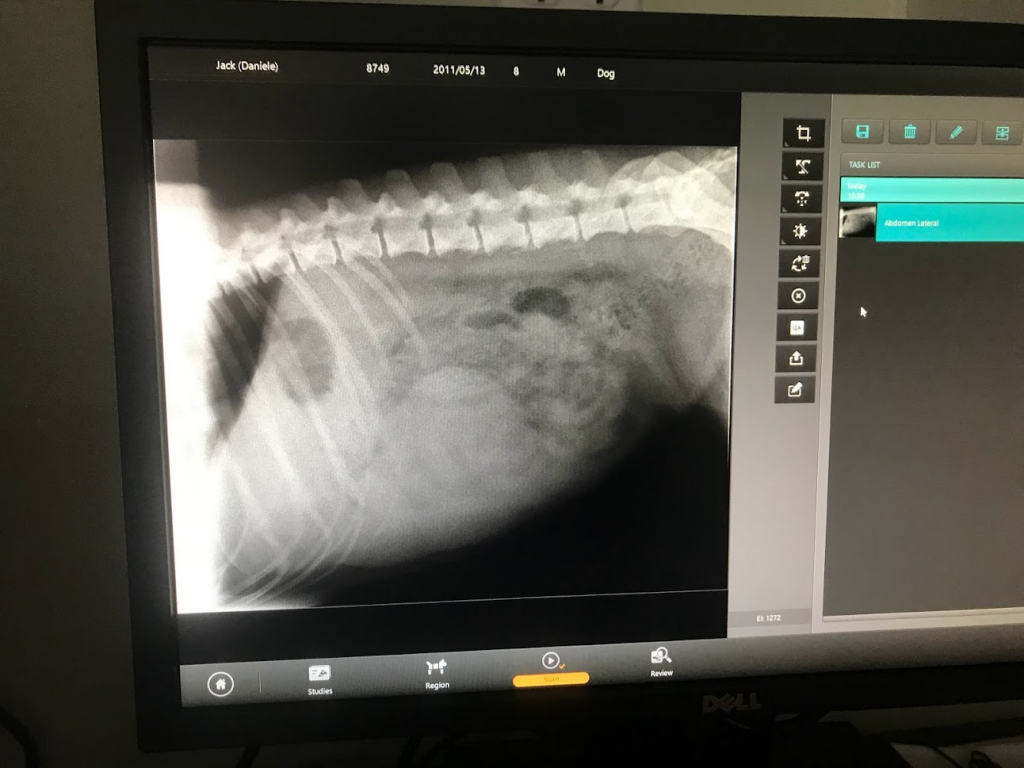
Now you might be asking what happens next? Or maybe you’re in this exact point in your dogs life and are looking for options. Well don’t worry, I am going to be breaking everything I did with my Jack. I fully believe these things we did with Jack are the only reason why he lived as long as he did with dog hemangiosarcoma.
The date was November 7th, 2019 when we took this X-ray. The next thing we did after this X-ray was the vet took a sample of his blood and went to have it tested. The reason for this was to confirm it is cancer and to see if it spread to other areas.
About a day later, the test results came back, it was confirmed it was cancer and the cancer had not spread, which is good news. But now here is where things get interesting.
We had two options, remove the dog spleen tumor completely, or let Jack live with it, and go along with his life as he normally would. What I want to do now is talk about the pros and cons of each option.
My main focus on deciding what to do next was based around my Jack’s overall health, how it would effect him, how he would feel and if he would still be the same Jack that he loved to be. But before we get into what I did, let’s discuss what dog hemangiosarcoma is.
What Is Dog Hemangiosarcoma
Hemangiosarcoma is a highly dangerous cancer that develops from the cells that normally make blood vessels. The spleen, liver, right atrium of the heart, and skin are the organs most frequently impacted. However, tumors can develop in any area of the body.
Many dogs are diagnosed with hemangiosarcoma of the spleen, or canine spleen cancer, each year. It is also referred to as a dog spleen tumor, a splenic mass in dogs or splenic hemangiosarcoma.
Because it is a cancer made up of blood vessel lining cells, it can exist anywhere in the body.
However, the liver, spleen, and right atrium of the heart are the most frequently affected areas.
About two thirds of splenic masses are malignant, and of those, two thirds are identified as hemangiosarcomas. While scientists don’t know what causes these tumors to form, the most common affected breeds are German Shepherds, Labrador Retrievers, and Golden Retrievers. Hemangiosarcoma is also more frequently diagnosed in older dogs.
Hemangiosarcoma Symptoms And Signs
The location of the primary tumor will affect the symptoms of hemangiosarcoma. Hemangiosarcoma can cause weakness, lethargy, or pale gums as a result of blood loss into the abdomen or the area around the heart.
Since it is hard to catch, many dogs are diagnosed with splenic hemangiosarcoma when an emergency happens.
In my case, I was able to tackle it early. Jack was breathing weird and I took him to get an X-Ray where we discovered the tumor.
But many dog owners are not as lucky as I was. Some signs include:
- Lethargy
- Decreased appetite.
- Weakness.
- Collapse.
- Pale gums.
- Abdominal enlargement (such as bloating or swollen abdomen)
- Cold limbs.
- Heart arrhythmia.
Diagnosis Of Hemangiosarcoma In Dogs
Owners who are worried about their pet’s usually take them to the vet. Here tests are usually done which allows the vets to discover hemangiosarcoma. Since it is hard to see symptoms of hemangiosarcoma, many times dog owners take there dog to the vet to fund out the tumor has ruptured and needs to be removed immediately.
Blood tests must be done prior to surgery in order to assess organ function, blood clotting capacity, and blood cell counts.
X-Rays are done, ultrasounds are done and blood tests are done to make sure anesthesia and surgery are good to be performed and that there is no evidence of spread.
It is also important to note that surgery might not be beneficial for canines with visible metastasis. Some dogs with hemangiosarcoma might need fluid therapy or blood transfusions before surgery as well.
Option #1: Treatment Of And Prognosis Of Hemangiosarcoma – Removing The Tumor

Regardless of where the primary tumor is located, surgery is the main course of treatment for the majority of dogs with hemangiosarcoma.
The terrible news:
After surgery, the cancer spreads to other parts of the body in the majority of these patients. Most dogs have an average of 1-3 months left after surgery.
Following surgery, chemotherapy may prevent metastasis. Doxorubicin (Adriamycin), which is used in “standard” chemotherapy, is typically administered once every two to three weeks over the course of five treatments. It is typically well tolerated.
After chemotherapy is finished, routine follow-up exams will be recommend.
The long-term outlook for dogs with hemangiosarcoma is typically not good, despite treatment. Only 10% of dogs survive for a year after surgery and chemotherapy, with average survival times of about 5-7 months.
So, your first option is to remove the effected area. In my situation with Jack, it was the spleen. So at the time, we were scheduled to have the spleen removed the next day (November 9th).
But something happen…
When we took Jack home on the 7th and 8th of November, he was himself. He did not show any signs of pain, or anything. We were still playing all day and night. So I started contemplating if it was worth having the surgery.
I started weighting out the pros and cons of removing the tumor on my dogs spleen.
The pros would be that this tumor would be removed and that is where the pros ended from my point of view. The sad truth is there are many stories online of people opting to have these tumors removed and a few weeks and even a few days later the sad time as come to say goodbye.
The truth is , dog hemangiosarcoma (like any cancer) just sucks. They are hard to find in our pets, especially if they show no signs and many times you only find out about them when an emergency happens. Hemangiosarcomas usually spread quickly or abruptly rupture without any trauma (just overtime).
The cons were that there could be issues with the surgery, it could just come back, Jack might not be the same (he was acting just like himself a day after the X-rays.)
At the end of the day, Jack was only expected to live 3-4 more months no matter what we choose to do.

Option #2: Treatment Of And Prognosis Of Hemangiosarcoma – Leaving The Effected Area In
After going back and forth on it for a day or so, I decided not to have the surgery. I knew the risks but I wanted my Jack to do what he loved everyday. Jack was a super energetic dog and you can read my tribute to learn more about him. He would walk miles with me, and then play fetch literally all day. He was a working dog and he loved to work, and I knew that this surgery may effect that.
I like to think I made the right choice. Jack went on and lived another 32 months with this cancer (My estimation is that he had this for at least three months, before I ever noticed anything).
Now I do believe Jack was an anomaly, and to expect the same results with Jack is silly.
But I want to show you that you can have hope. That your dog can live longer than expected. They can live a life of doing things they love, even with cancer.
Jack crossed the rainbow bridge on July 12, 2022, at 11 years and 2 months old. He passed away outside (his favorite place to be) peacefully with me right by his side.
The disease is indolent, meaning it does not cause pain and the rate of growth in the early stages is relatively slow. Even dogs with large hemangiosarcoma’s may not show any clinical symptoms or other indications that their condition is life-threatening.
What happens When A Dog Dies From Hemangiosarcoma?
When it is your dogs time, lameness, limping. Swollen joints. Sudden death; usually results from uncontrollable bleeding caused by the rupture of a hemangiosarcoma tumor, which causes the dog to bleed to death from internal hemorrhage
What happened here is the spleen eventually ruptured.
With every major Animal Center giving dogs with hemangiosarcoma an average survival times of 5-7 months, with only 10% of dogs surviving for one year, I believe it was the right choice.
But choosing not to have surgery may not be the best option for every dog, and you need to understand that.
You need to know that many times, without treatment, most dogs diagnosed with hemangiosarcoma of the internal organs will die within one to two weeks, although some can survive for several months.
I truly believe my Jack was a resilient boy, and I truly believe the supplements we gave him daily played a huge role in slowing the growth of this cancer.
Unfortunately there is nothing I can tell you that will make this choice you make easier. I knew there was a high risk here with leaving Jack’s spleen in. You need to know that as well, if you decided to take this route as well.
You should always speak to your vet for recommendations; the affected area will also play a role.
Supplements To Treat Dog Hemangiosarcoma

Now I want to start out by saying I gave my Jack a ton of different supplements. Some recommended by our vet, some recommend by my research. I contribute Jack’s incredible length of living with hemangiosarcoma to the help of these supplements, and always having faith.
I do believe a big factor in all of this was discovering this tumor on my dogs spleen a little early. This allowed me to give him supplements to help slow the spread, and growth of the tumor.
Supplement #1 – Turkey Tail Mushrooms
Turkey tail mushrooms (also known as Coriolus versicolor mushroom) are found in the Immunity blend (below), but this specific ingredient has been linked to helping slow cancer growth. The PSP and PSK in turkey tail mushroom can actually help slow cancer growth and boost your dogs immune system. It is a great supplement that helps your dog’s body recognize cancer tumors and fight them directly.
What made me believe in the Turkey Tail mushrooms is a study done by the University of Pennsylvania’s School of Veterinary Medicine. A study was done by the team on turkey tail mushrooms using 15 dogs with an aggressive type of cancer.
The cancer these dogs had was very aggressive. The untreated dogs lived only 86 days before passing away from cancer.
But the results of the dogs who were giving this mushroom compound shocked the UPenn Vet researchers (Click here to read the full study).
The median avg time for dogs who did not receive anything was 86 days.
Dog who were giving the mushroom compound – Some lived over a year with no treatment other than the mushroom compound.
You can buy the same Turkey Tail Compound I gave Jack Here:
Turkey Tail Mushrooms – (Want $20 Off your first order? Contact me, and I’ll send you more info)
Supplement #2 – Immunity – 7 Mushroom Blend
Now why mushrooms? Well, it doesn’t kill the cancer; but it help’s your pet’s body fight cancer.
According to studies, Mushroom-derived compound lengthens survival in dogs with cancer. The study showed that dogs with hemangiosarcoma that were treated with a compound derived from the Coriolus versicolor mushroom had the longest survival times ever reported for dogs with the disease (that’s Number #1, but is also in this blend).
But Not All Mushrooms Are Equal
There are thousands of different types of mushroom species, but only select amount good for consumption for humans and animals. Some of the most popular and useful mushrooms include:
- Shiitake
- Maitaki
- Reishi
- Turkey tail
- Cordyceps
Immunity is a combination of 7 organic mushrooms. Each mushroom is picked for their synergistic properties.
I gave Jack 1 teaspoons a day, mixed with his UltraInflamX (Note this might make your dog less interested in his food, due to the smell).
I highly recommend the Immunity blend. You can find it here:
Immunity Blend (Want $20 Off your first order? Contact me, and I’ll send you more info)
Supplement #3: UltraInflamX Plus 360 Mango Flavor
Advanced Support for the Nutritional Management of Compromised Gut Function in IBD
UltraInflamX is a supplement that is actually for humans and is completely safe for both dogs and humans of course. It’s main benefits to “support for patients with compromised gut function resulting from inflammatory bowel disease, including ulcerative colitis and Crohn’s disease. Provided in a proprietary, vegan pea/rice protein base, this formula addresses increased nutrient needs and potential deficiencies in these patients.”
Jack received 2 tablespoons, two times a day with food. I put a little water in it (made it like a paste) and would pour it over his food. Sometimes the smell of this made Jack not want to eat (he was a picky eater), so I would give it to him orally through a syringe.
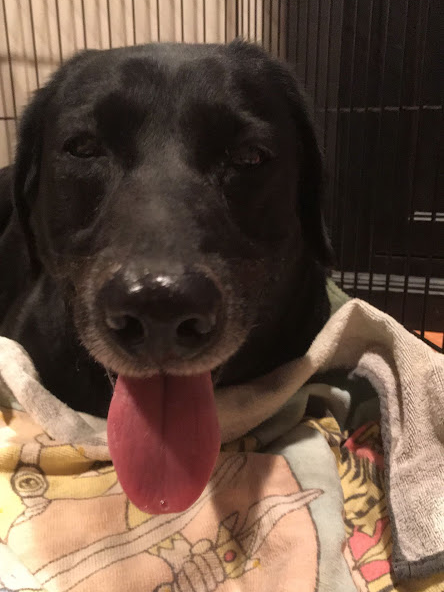
You can find this from your vet (which is how we purchased it monthly) or you can purchase online from sites like Mango Flavor IS Recommended (as it is safe for dogs – DO NOT BUY CHOCOLATE):
– Metagenics
– Natures Remedies
– Lifestreamrx
Supplement #4: ENDO BLEND CBD Oil
The cbd oil is another ingredient I gave Jack. You simply select your dogs body weight and they instruct on how many drops they should give. I added this to his food to make it easier, but they do recommend you drop it into your dogs mouth.
How does it work?
According to ENDO BLEND it “works on the Endocannabinoid system, a group of specialized receptors in the brain, spine, peripheral nerves, blood vessels and the immune system. Interaction with these receptors help relieve occasional discomfort, and maintain and support nervous system, gastrointestinal and immune system health.”
You can buy it here:
Supplement #5: VetriScience Canine Plus MultiVitamin for Dogs
A multivitamin for Jack was the last ingredient that I believe helped his cancer. The multivitamin incorporated over 25 nutrients to help his overall health, supported his cardiovascular system, nervous system, immune system and cognitive and liver health.
VetriScience Canine Plus MultiVitamin for Dogs
I gave Jack a few other supplements (mainly for joint health, but I do not believe this helped or harmed the cancer.)
Symptoms Of Spleen Cancer In Dogs (Dog Hemangiosarcoma)

Dog splenic tumor symptoms can be nonexistent, and they are frequently discovered during a diagnostic procedure for another condition.
Rupture is a major concern with the majority of splenic tumors. Even benign tumors have the potential to bleed slowly or rapidly because the spleen has numerous blood vessels. A fast bleed can cause an intense, severe, life-threatening blood loss into the abdomen while slow bleeds present more mild symptoms.
If your dog has spleen cancer, you may notice some of the following things happening.
Your dog may be more tired or lethargic, have a decreased appetite, or abdominal enlargement (such as bloating or swollen abdomen).
Causes of Spleen Cancer in Dogs
Most splenic tumors have an unknown cause. All dog breeds can develop splenic cancer, but vets typically find it in older dogs. Retrievers are by far the most common breeds to develop spleen cancer.
There are even studies being done by the Morris Animal Foundation, who focus on Golden Retriever’s. The purpose is to to identify the nutritional, environmental, lifestyle and genetic risk factors for cancer and other diseases in dogs.
At Jacktra, we want to give back as much as we can, that is why we hope you make us your homepage and we together help us change and eliminate these cancer’s from our world.
How Veterinarians Diagnose Spleen Cancer in Dogs
A bleeding splenic tumor may be suspected by veterinarians based only on clinical signs and a physical examination. Large enough tumors can be palpated through the abdominal walls, and bleeding frequently causes an abdominal fluid wave.
Blood chemistry and complete blood count (CBC)
After diagnosing a splenic tumor, veterinarians frequently advise bloodwork as a first step to determine general health. A complete blood count can identify anemia (low red blood cell count) and low platelets, which are frequently caused by a bleeding or ruptured tumor. The blood chemistry panel may show issues common to many conditions, such as dehydration.
Another thing I want to mention is the red blood cell count.
Jack went to the vet regularly for his checkups and another thing we noticed was a low red blood cell count. We were advised to start giving Jack some raw meat with his food (which we did, and he loved that!)
But the reason I am sharing this with you is, if you’re dog’s vitals come back with something similar, it could be an early sign of dog hemangiosarcoma.
Coagulation Tests
Coagulation tests will be performed to determine whether a dog is at risk for serious bleeding issues because low platelets and other clotting-related indicators are common in some types of splenic tumors.
The duration of the blood clotting process is measured by this kind of test, which also measures prothrombin and partial thromboplastin times. Unusual results could be a sign that the patient’s disease is more advanced and at risk for further bleeding. If bleeding is suspected, coagulation tests can help direct treatment, such as blood product transfusions that might increase survival during surgery.
X-Rays
To assess the spleen’s overall size, shape, and location in relation to other abdominal organs, x-rays, are helpful. The spleen may have obvious masses, or it may simply be abnormally enlarged and shaped, as noted by veterinarians. In order to check for lung cancer spread, veterinarians will also want to take x-rays of the organ.
Dog Hemangiosarcoma FAQ
How long do dogs live with spleen cancer?
Depending on how sever the tumor is, will make this depend. Dogs with splenic cancer may live for weeks to a few months.
Is spleen cancer in dogs curable?
There are no cures at the moment for splenic cancer
Conclusion
There is nothing more devastating then finding out your dog has hemangiosarcoma. If you have just received this news, I would highly recommend in giving your dog some of the supplements I gave to my Jack. I truly believe they were the equivalent to magic supplements, and even UPenn vet research’s could not believe the effect of this supplement.
Cherish everyday, every second you have with your furry best friend. There is nothing you can do to prepare yourself for life without them, so take it one day at a time and enjoy every second of it.
As always we hope we were able to give you some hope in these dark times. At Jacktra, were determined to help dogs, cats, and animals all around the globe. When you hang out on our site, you’re helping us raise money. We hope you make GoJacktra your homepage, and we can start giving back every day!




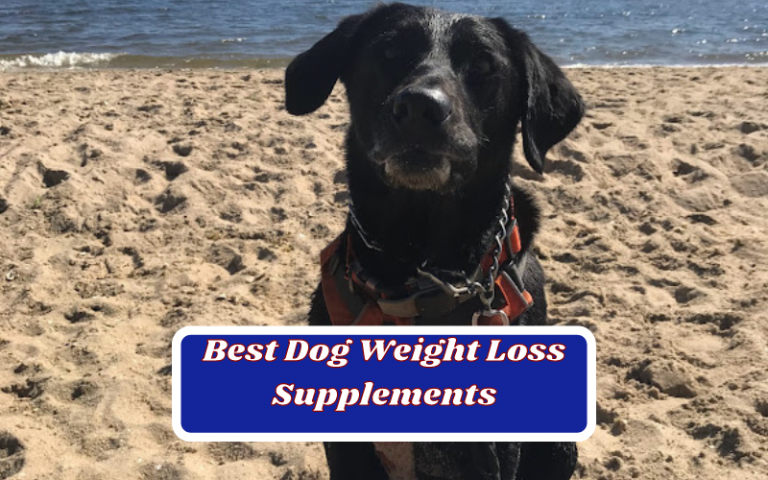
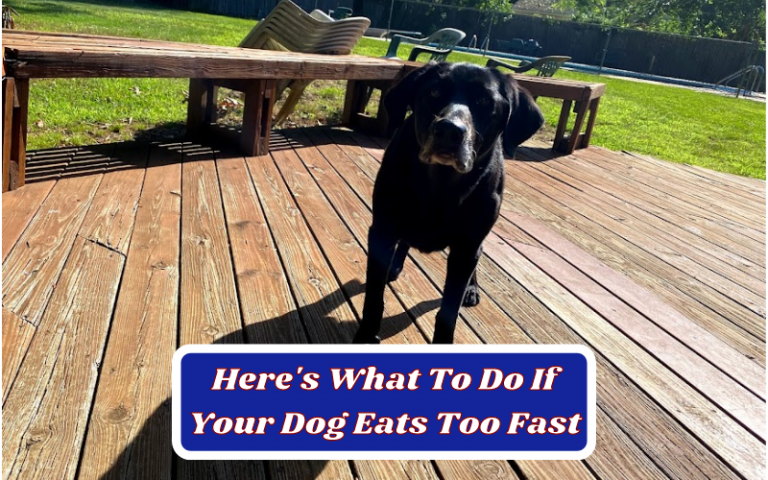
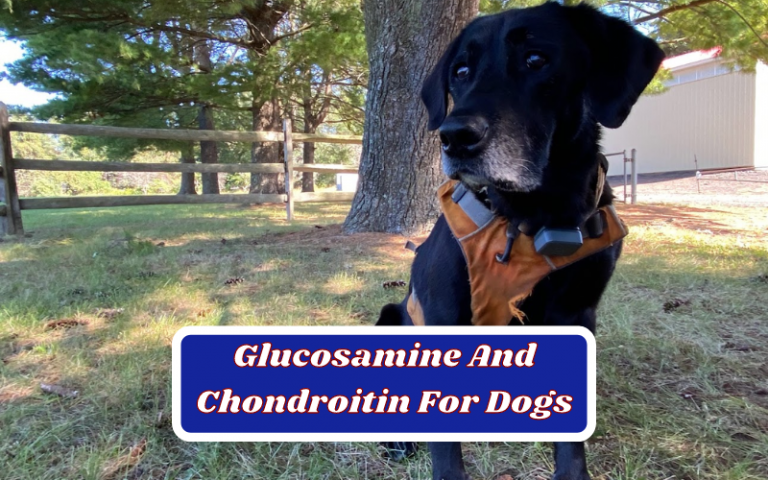
3 Comments